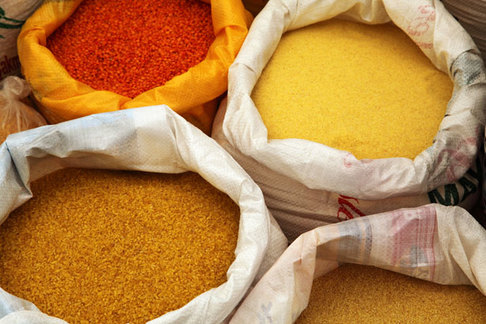|
Not every menu item is going to be a best-seller. It’s reasonable to expect your signatures to outpace your lesser-known dishes, and for newer items to take a while to catch on. But the dynamic between haute plates and their not-so-popular counterparts goes much deeper. Some restaurants add items to their menu without expecting a sales lift at all, using them as a marketing ploy instead. Nefarious? No, there’s nothing wrong with putting an item on the menu that you can prepare but don’t expect to sell all that often. Strategic, on the other hand? Yes, absolutely. So what’s the point of adding an item to your menu that you don’t expect to catch on? Check out several applications for this approach. Branding Your menu says a lot about your restaurant. In the same way that chic, modern décor defines a hip, urban feel, so too does an exotic ingredient list and fusion of worldly flavors. On the surface, these trends reflect the masses’ yearning to try new and different creations, and thus the establishments that serve salt-crusted bone marrow and grilled octopus will bring new faces through their doors. In reality, however, many restaurant owners attest that while these intriguing items create the initial draw, most customers will revert to more traditional items when actually placing their order. So bone marrow may be a great crowd-pleaser on paper, but servers will mostly relay requests for burgers and mac ‘n’ cheese. Sure, they may be short rib burgers with a kimchi and fried jalapeno, and truffle mac ‘n’ cheese, but the items with more familiar bases will often prevail in the end. So why add an item like bone marrow in the first place? Because if you limit your menu to the basic items, however exotic their additives may be, guests will limit their perception of your menu to be much less adventurous. In the same way that a Ferrari owner may not often take the car up to 220 mph, just knowing that the car can go that fast creates the appeal that justifies the price. Bone marrow essentially becomes an accessory, a kind of menu eye candy that lifts up everything around it, elevating the brand to demonstrate exotic appeal. Should everyone add something like bone marrow to their menu? Definitely not—if you own a casual restaurant that thrives on good food at low prices, exotic menu additions can lead people to assume that you’re more expensive, driving down volume. On the other hand, if you’re trying to become more ‘hip and trendy,’ then maybe a novel touch to your menu can help. Just be sure that any additions align with your restaurant’s central theme, fits into your margins and that you account for sourcing, storage and staff training. Pricing A much more typical case of menu additions comes in pricing. Adding an item that is well below, or above the average menu price [or both] is known as anchoring, and can have a positive effect when it comes to the psychology behind your customers’ ordering process. When a customer sees entrees for $18, $17, $18, $19, $16, $29 and $17, the $29 item clearly stands out and poses little chance of being ordered. This can be a steak option amidst a lineup of burgers and sandwiches, but in any case makes every other item seem that much cheaper by comparison. On the other hand, when the entrée list reads $38, $46, $29, $41, $42 and $39, all of a sudden that $29 item seems like a bargain. In this case, most guests may not get the $29 chicken, but because there’s a sub-$30 item on the menu, it makes the restaurant as a whole appear to be in closer reach of a more price-conscious consumer. Both methods used simultaneously can work, just be sure not to go too extreme in either direction. An item priced too low can lower your restaurant’s brand perception [“If they make a sandwich for $8, then their $38 steak can’t be that good.”]. An item priced too high will just be taken out of the consideration set entirely [“A $95 porterhouse for two…well that just sounds silly.]. Make these additions one small step at a time and test frequently to see if they’re making an impact on your volume or sales. It’s always easier to scale back on a small change than a huge rollout.
0 Comments
Leave a Reply. |
AuthorBenjamin Brown is a seasoned restaurant writer and hospitality consultant, serving up SoCal's hottest food news and reviews. Categories
All
Archives
June 2021
@Foodie_Biz |
|
Home
About
Blog
Consulting Tips
Contact
Legal
|
Foodie Biz provides restaurant news and reviews for the food community, as well as consulting advice for restaurant owners and other hospitality professionals.
Contact Foodie Biz for media opportunities and freelance consulting projects. Contact Foodie Biz |




